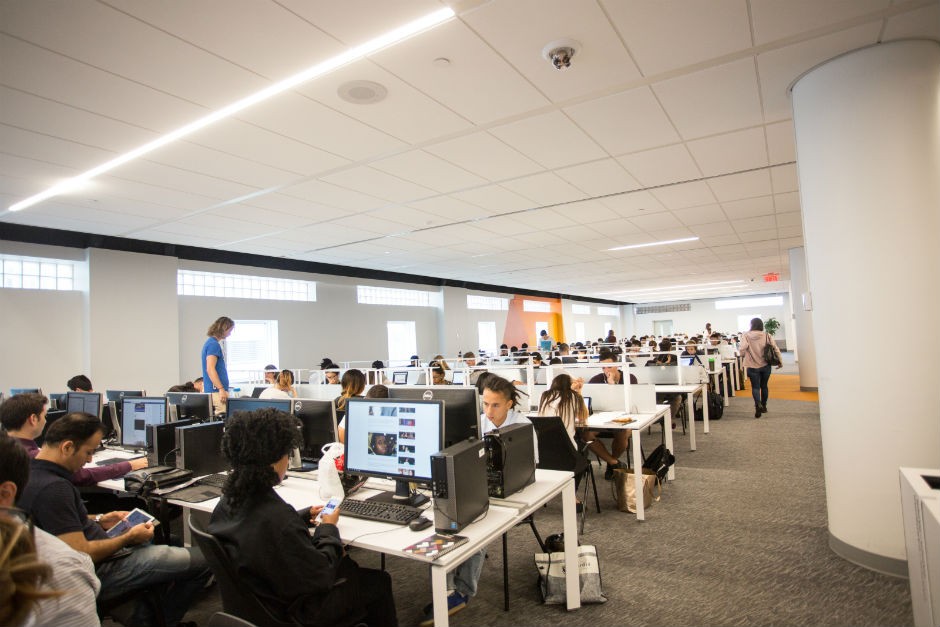Seyed Mohammad Mirjalili is a PhD candidate in Electrical and Electronics Engineering at Concordia. He received his Bachelor and Master's degrees in Electrical Engineering from Shahid Beheshti University in Tehran, Iran. Seyed Mohammad is internationally recognized for his contributions to the fields of Evolutionary Algorithms and Photonics. He has published 29 journal articles with over 3000 citations in total, with an H-index of 15 from Google Scholar Metrics.
Blog post
Twisted light: a monumental technology that will revolutionize internet speed

Can you imagine what your lifestyle would be with the exponential advancement of technology in the near future?
We will soon be using many new internet-based services in our lives. Two trending areas that require high internet speed are the internet of things (IoT) and cloud computing. The former refers to the use of any devices via the internet, including televisions, fridges and air conditioners. The latter, cloud computing, allows us to use data storage, computing resources and software applications remotely. Cloud-based IoT is the result of merging these two technologies.
Big enterprises such as Amazon, Microsoft and Google are the market leaders in the areas of cloud computing and cloud-based IoT. According to Sara Patrick [1], more than 90 per cent of businesses in the United States are using some sort of cloud services. Even data-hungry industries such as live streaming, video sharing and video gaming now use cloud services. For instance, Dropbox and Netflix started to employ Amazon cloud services.
Google is launching Stadia, which allows up to 4K video streaming at 60 frames per second (FPS). This means that you can play any video games on their platform without the need to buy a computer. All you need are a controller and an internet connection.
Obviously, cloud computing services require extremely high-speed internet. These types of services require transmitting a huge amount of data in a very short time. The problem is that current communication systems cannot cope with this ever-increasing demand. In other words, the physical layer of the communication network should be improved and revolutionized to provide the proper foundation for new emerging technologies [2].
The existing network infrastructure should evolve to meet the stringent requirements of emerging internet-based services. These services require the explosive growth of 1,000 times in capacity and 10 times the growth in spectral and energy efficiency, as well as data rate [3].
What limits us to have faster internet?
In the data communication system, the data of all internet users is collected and carried by lights. Optical fibres transmit the light waves using wavelength division multiplexing (WDM) technology.
Space division multiplexing (SDM) is one possible technological solution to provide a higher capacity for WDM communication in which data is carried by different patterns of light. Although SDM technology offers an opportunity to multiply the carrying capacity of the optical fibre compared to previous technologies, the provided capacity is not high enough to satisfy the requirements of future internet-based services.
The problem with the conventional pattern of light is that they are mixing while transmitted through the fibre. Therefore, on the receiver side, we need to utilize a very complex signal processing technique to separate the data of each user. This problem limits us to increase internet speed any more.
Twisted light: a solution for faster internet
Recently, researchers have found that some specific patterns of light show interesting behaviour while propagating. These patterns of light are called twisted light. Such beams occupy the same space without interfering with one another. In other words, they are not mixing as they propagate through the fibre.
As a result, on the receiver side, the received lights are mostly untouched and require much less signal processing to extract the data. The twisted light is a promising technology which many expect to provide up to 1,000 times faster internet in the near future.
Research trends
My research contributes to this area by proposing and developing a new set of optical devices to support twisted light. Cloud computing and IoT will be the first areas which embrace my contributions.
Due to the complexity of the internal processes in such devices, finding an analytical equation, which describes the relationship between the structural parameters and the device output performance, is usually very challenging and often impossible.
Therefore, the conventional method for designing such devices without having analytical methods is based on a trial-and-error process. This method has many disadvantages, as the designed device is usually far from an optimized one and the designing process needs huge human involvements.
An alternative method for designing and improving the performance of such devices is to utilize artificial intelligence (AI) techniques for compensating the lack of analytical equations. Hence, the first step is to formulate the device designing process for an optimizer. The second step is to utilize an AI-based optimizer to find the optimum designs. This method bypasses the process of finding the relationship between the structural parameters and the device outputs.
By using such devices in data communication systems, we can move into the future of the internet, making it possible to experience tactile internet, telesurgery, telepresence, augmented reality and so much more.
1. S. Patrick, “Security and the Cloud: Trends in Enterprise Cloud Computing,” Clutch.co, 2016. [Online]. Available: https://clutch.co/cloud/resources/security-trends-in-enterprise-cloud-computing.
2. H. Murata, “Advanced photonic devices for 5G network in dense user environment,” Summer Top. Meet. Ser. SUM 2017, pp. 91–92, 2017.
3. L. A. Rusch, M. Rad, K. Allahverdyan, I. Fazal, and E. Bernier, “Carrying Data on the Orbital Angular Momentum of Light,” IEEE Commun. Mag., vol. 56, no. 2, pp. 219–224, 2018.
About the author


